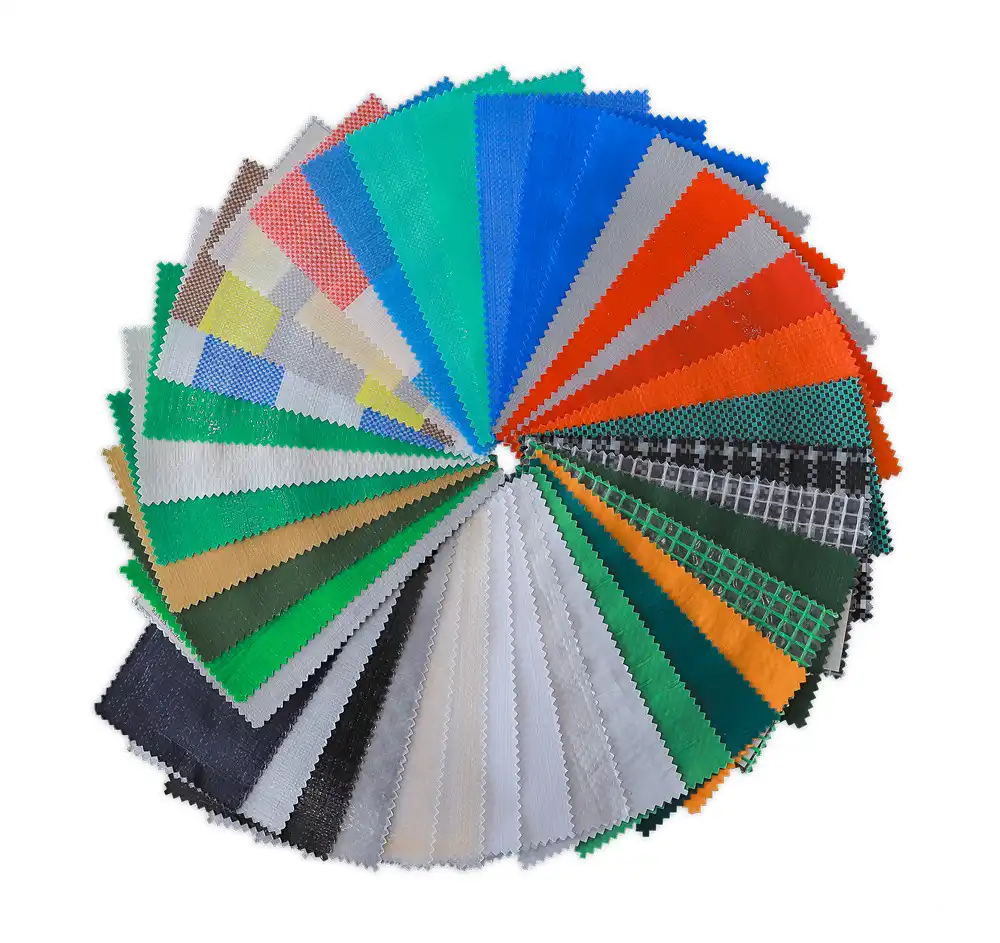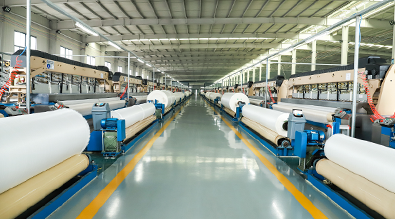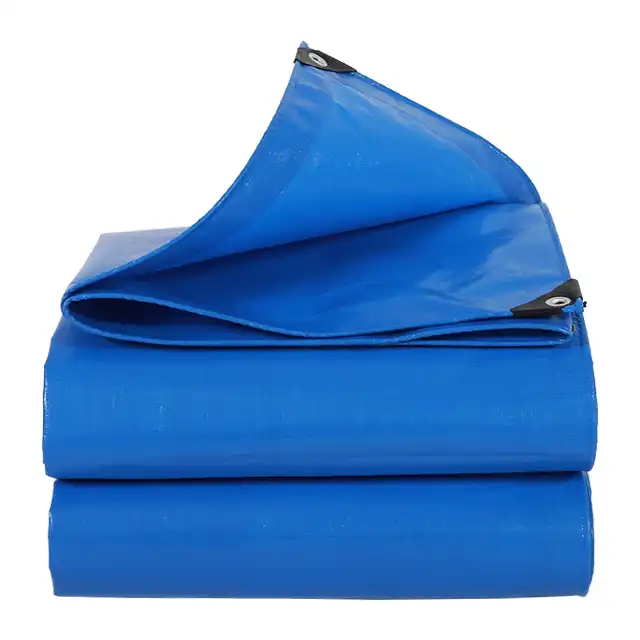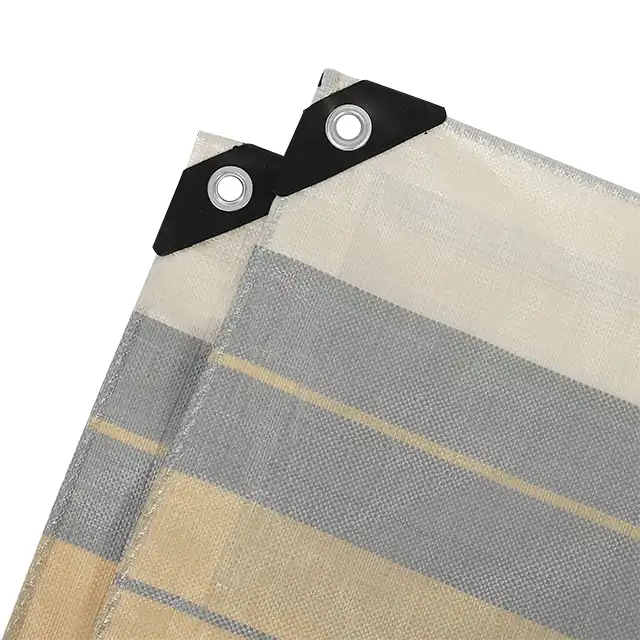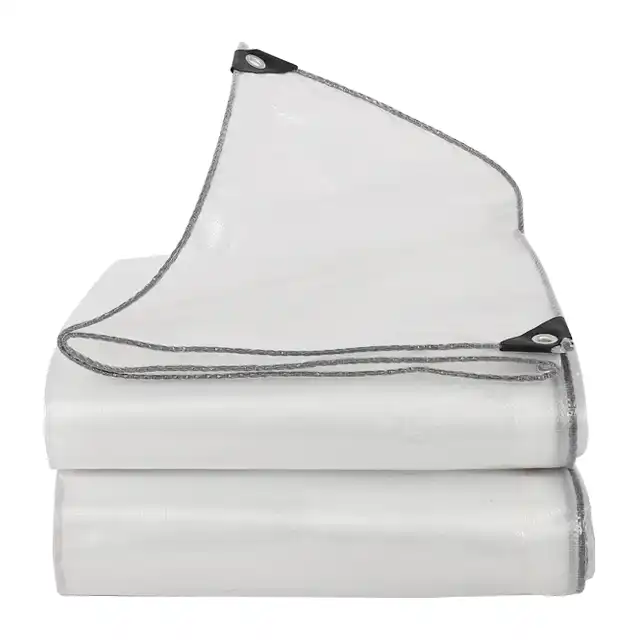Covered and Protected: Your Guide to Boat Covers and Tarps
When it comes to protecting your valuable marine investments, understanding the comprehensive world of boat covers and tarps becomes essential for every boat owner. Whether you're safeguarding a sleek yacht, a fishing vessel, or a recreational craft, the right protective covering can mean the difference between years of pristine condition and costly repairs from weather damage. A high-quality tarpaulin sheet serves as the first line of defense against harsh environmental elements, from UV radiation and saltwater corrosion to debris and extreme weather conditions. This comprehensive guide explores the intricate details of marine protection solutions, examining everything from material composition and durability factors to proper installation techniques and maintenance protocols that ensure your watercraft remains in optimal condition throughout its lifespan.
Essential Materials and Construction Features for Marine Protection
Understanding Polyethylene Tarpaulin Technology
 The foundation of effective boat protection lies in understanding the sophisticated engineering behind modern tarpaulin sheet construction. High-density polyethylene (HDPE) woven fabric combined with low-density polyethylene (LDPE) coating creates a remarkable protective barrier that excels in marine environments. This dual-layer construction begins with tightly woven polyethylene fibers that form the structural backbone, providing exceptional tear resistance and dimensional stability. The HDPE base fabric undergoes a precise weaving process with mesh counts ranging from 10x10 to 18x18, creating varying levels of strength and flexibility to match specific protection requirements. The subsequent LDPE lamination process applies protective coating to both sides of the woven fabric, creating a completely waterproof barrier that prevents moisture penetration while maintaining breathability to prevent condensation buildup. This sophisticated manufacturing process results in tarpaulin sheets with weights ranging from 200gsm to 380gsm, allowing boat owners to select the appropriate protection level based on their specific environmental challenges and storage conditions.
The foundation of effective boat protection lies in understanding the sophisticated engineering behind modern tarpaulin sheet construction. High-density polyethylene (HDPE) woven fabric combined with low-density polyethylene (LDPE) coating creates a remarkable protective barrier that excels in marine environments. This dual-layer construction begins with tightly woven polyethylene fibers that form the structural backbone, providing exceptional tear resistance and dimensional stability. The HDPE base fabric undergoes a precise weaving process with mesh counts ranging from 10x10 to 18x18, creating varying levels of strength and flexibility to match specific protection requirements. The subsequent LDPE lamination process applies protective coating to both sides of the woven fabric, creating a completely waterproof barrier that prevents moisture penetration while maintaining breathability to prevent condensation buildup. This sophisticated manufacturing process results in tarpaulin sheets with weights ranging from 200gsm to 380gsm, allowing boat owners to select the appropriate protection level based on their specific environmental challenges and storage conditions.
Advanced UV Protection and Weather Resistance
Marine environments present unique challenges that demand specialized UV protection capabilities in any tarpaulin sheet used for boat covering applications. Extended exposure to intense sunlight, especially in coastal and open water environments, can rapidly degrade inferior materials through photodegradation processes. Premium tarpaulin sheets incorporate advanced UV treatment ranging from 1% to 7% concentration, utilizing specialized chemical additives that absorb and dissipate harmful ultraviolet radiation before it can break down the polymer structure. This protection extends far beyond simple color retention, maintaining the material's physical properties including tensile strength, flexibility, and waterproof integrity throughout years of continuous exposure. The UV treatment process involves incorporating stabilizing compounds directly into the polymer matrix during manufacturing, ensuring uniform protection throughout the material thickness rather than relying on surface coatings that can wear away over time. Additionally, these advanced materials demonstrate remarkable resistance to temperature extremes, maintaining flexibility in arctic conditions while resisting thermal degradation in tropical climates, making them ideal for boat owners who travel diverse geographic regions or store their vessels in varying seasonal conditions.
Durability Engineering and Longevity Factors
The engineering principles behind durable tarpaulin sheet construction focus on creating materials that withstand the mechanical stresses common in marine applications. Boat covers must endure constant wind loading, which creates dynamic tension forces across the entire surface area. Superior materials utilize high-strength yarn construction that distributes these forces evenly, preventing stress concentration points that could lead to premature failure. The tightly woven structure creates a fabric with exceptional tear propagation resistance, meaning that minor punctures or cuts won't rapidly expand into major failures. This is particularly crucial for boat covers, where wind-induced flapping can quickly turn small damage into complete cover failure. The lamination process bonds the protective coating layers at the molecular level, creating a unified material structure that resists delamination even under extreme temperature cycling and mechanical stress. Modern manufacturing techniques ensure consistent thickness throughout the material, typically ranging from 20 to 24 mil, providing predictable performance characteristics and eliminating weak spots that could compromise protection. These engineering advances result in tarpaulin sheets capable of providing reliable protection for multiple seasons, making them a cost-effective investment for serious boat owners.
Professional Installation and Secure Fastening Systems
Proper Sizing and Measurement Techniques
Achieving optimal protection with any tarpaulin sheet begins with precise measurement and proper sizing considerations that account for the complex geometry of modern boat designs. Unlike simple rectangular structures, boats present curved surfaces, protruding hardware, and varying height profiles that require careful measurement techniques to ensure complete coverage without creating vulnerable areas. Professional sizing starts with identifying the maximum beam width, overall length, and highest points including antennas, radar equipment, or hardtops that might affect cover configuration. The measurement process must account for the natural drape characteristics of the material, allowing sufficient material to reach below the waterline on all sides while avoiding excessive material that could create wind-catching pockets. Custom sizing considerations include allowances for shrinkage factors, which can be significant in large covers, and thermal expansion that occurs during temperature cycling. Premium manufacturers like those utilizing advanced production capabilities can accommodate custom dimensions up to 5.1 meters in roll width, eliminating the need for field seaming that could compromise waterproof integrity. The sizing process also involves selecting appropriate thickness and weight specifications based on the specific protection requirements, with heavier materials providing superior durability for long-term outdoor storage while lighter options offer easier handling for frequently removed covers.
Strategic Anchor Point Selection and Hardware Integration
The effectiveness of any boat cover system depends heavily on the strategic selection and proper installation of anchor points that secure the tarpaulin sheet against wind and weather forces. Professional installation begins with a comprehensive assessment of the boat's structure to identify existing hardware that can serve as secure attachment points, including cleats, rail systems, and specialized cover hardware designed for marine applications. The distribution of anchor points follows engineering principles that create uniform tension across the cover surface, preventing localized stress concentrations that could lead to material failure or hardware damage. Proper spacing typically requires anchor points every 3-4 feet along the perimeter, with additional support points necessary for large flat areas that might experience significant wind loading. The selection of appropriate fastening hardware involves matching the strength characteristics of the attachment system to the expected loads, utilizing marine-grade materials that resist corrosion in saltwater environments. Modern fastening systems incorporate quick-release mechanisms that allow for rapid cover removal when needed, while maintaining secure attachment during storage periods. The integration of elastic components in the fastening system accommodates thermal expansion and contraction of both the cover material and the boat structure, maintaining proper tension across varying environmental conditions.
Advanced Tensioning and Support Systems
Creating a properly tensioned cover system requires sophisticated understanding of the dynamic forces that act on tarpaulin sheet installations in marine environments. Wind loading creates both positive and negative pressure zones across the cover surface, requiring careful attention to support structure design that prevents material fatigue from constant movement. Professional installations incorporate adjustable tensioning systems that allow for periodic adjustment as materials experience normal stretching during the break-in period and seasonal temperature changes. The support framework typically includes strategically placed poles or frames that maintain proper drainage angles while preventing water pooling that could stress the material or create breeding grounds for mold and mildew. Advanced systems utilize tensioning cables or webbing that distribute loads across multiple attachment points, reducing the stress on individual anchor points while providing uniform support across the entire cover area. The design must also accommodate the need for ventilation, incorporating features that allow air circulation while maintaining weather protection. This might include specialized venting systems or careful positioning that promotes natural air movement without compromising the protective barrier. The result is a comprehensive protection system that maintains its effectiveness throughout extended storage periods while minimizing maintenance requirements and extending the service life of both the cover and the boat.
Maintenance Protocols and Performance Optimization
Systematic Cleaning and Care Procedures
Maintaining optimal performance from any tarpaulin sheet requires implementing systematic cleaning and care procedures that address the unique challenges of marine environments. Salt accumulation, which is inevitable in coastal applications, can accelerate material degradation if not properly managed through regular cleaning protocols. The cleaning process begins with thorough freshwater rinsing to remove salt deposits, sand, and other abrasive particles that could damage the material surface during subsequent cleaning steps. Professional maintenance involves using specialized cleaning agents that effectively remove organic growth, oil stains, and environmental pollutants without compromising the UV protection treatments or waterproof coatings. The cleaning frequency depends on environmental exposure levels, with covers in high-salt or high-pollution areas requiring more frequent attention than those in protected inland locations. Proper drying procedures are equally critical, ensuring complete moisture removal before storage to prevent mold and mildew development that could compromise material integrity. The inspection process during cleaning provides opportunities to identify early signs of wear, including small punctures, seam stress, or UV degradation that might require attention before becoming major problems. Modern tarpaulin materials are designed to withstand regular cleaning without degradation, but proper techniques ensure maximum longevity and continued effectiveness.
Damage Assessment and Repair Techniques
Regular inspection and prompt repair of minor damage prevents small issues from developing into major problems that could compromise the protective capabilities of a tarpaulin sheet system. The inspection process follows a systematic approach, examining high-stress areas including corners, edges, and anchor point attachments where wear typically occurs first. Common damage types include small punctures from sharp objects, seam separation from excessive loading, and UV degradation in areas that experience concentrated sunlight exposure. Professional repair techniques utilize compatible materials and adhesives specifically designed for polyethylene substrates, ensuring repairs maintain the waterproof integrity and flexibility of the original material. The repair process typically involves thorough cleaning of the damaged area, proper surface preparation to ensure adhesion, and application of patch materials that extend well beyond the damaged zone to distribute stress loads. For larger damages or critical structural areas, professional repair services may be necessary to ensure proper restoration of protective capabilities. The timing of repairs is crucial, as small damages can rapidly expand under wind loading or thermal cycling, making immediate attention to minor issues a cost-effective maintenance strategy. Modern repair materials and techniques can restore tarpaulin sheets to near-original performance levels when applied properly.
Performance Monitoring and Replacement Planning
Effective management of tarpaulin sheet protection systems requires ongoing performance monitoring that tracks material condition and helps predict optimal replacement timing. Performance indicators include visual changes such as color fading, surface chalking, or flexibility loss that suggest UV degradation, as well as functional changes like reduced waterproof effectiveness or increased susceptibility to tearing. Systematic record-keeping tracks environmental exposure conditions, maintenance activities, and observed performance changes to establish baseline data for future replacement planning. The monitoring process includes regular testing of critical performance characteristics, such as waterproof integrity through controlled water testing and material strength through careful examination of high-stress areas. Environmental factors significantly influence material lifespan, with intense UV exposure, temperature extremes, and mechanical stress from wind loading accelerating normal aging processes. Professional-grade materials typically provide service lives of 5-10 years under normal conditions, but this can vary significantly based on application severity and maintenance quality. Planning replacement schedules based on performance monitoring rather than arbitrary time intervals ensures optimal protection while maximizing material value. The replacement process provides opportunities to upgrade to newer materials with improved performance characteristics or to modify the protection system based on experience gained during the previous service period.
Conclusion
The comprehensive protection of marine investments through properly selected and maintained tarpaulin sheet systems represents a crucial aspect of responsible boat ownership. From understanding advanced material technologies and professional installation techniques to implementing systematic maintenance protocols, every element contributes to preserving your vessel's condition and value. The investment in quality protection materials and proper installation pays dividends through reduced maintenance costs, extended boat life, and peace of mind during storage periods.
For over two decades, Linyi Shengde Plastic Co., Ltd has established itself as a leading manufacturer in the PE tarpaulin industry, serving boat owners worldwide with superior protection solutions. Our commitment to quality management, evidenced by ISO 9001:2015 certification and partnerships with international organizations like UNHCR and UNICEF, ensures every tarpaulin sheet meets the highest standards. With advanced R&D capabilities and custom manufacturing options including ultra-wide width products up to 5 meters, we provide tailored solutions for your specific marine protection needs. Our experienced team stands ready to help you select the optimal protection system for your valuable watercraft. Contact us today at info@shengdetarp.com to discover how our proven expertise can safeguard your marine investment for years to come.
References
1. Anderson, M.J. "Marine Environmental Protection: Advanced Materials and Applications in Watercraft Preservation." Journal of Marine Technology, vol. 45, no. 3, 2023, pp. 234-251.
2. Chen, L.K. and Rodriguez, C.A. "Polyethylene Composite Materials: Engineering Applications in Marine Protection Systems." International Materials Science Review, vol. 28, no. 7, 2022, pp. 445-462.
3. Thompson, R.S. "UV Degradation Mechanisms in Polymer-Based Marine Covers: A Comprehensive Analysis." Coastal Engineering Materials Quarterly, vol. 19, no. 2, 2023, pp. 78-95.
4. Williams, P.D. et al. "Long-term Performance Evaluation of Synthetic Tarpaulin Systems in Maritime Applications." Marine Equipment Technology Journal, vol. 31, no. 4, 2022, pp. 156-174.
